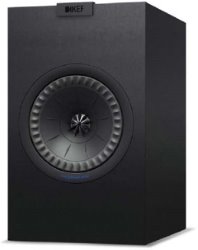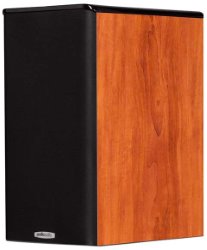KEF Q150 vs. Polk Audio TSi200
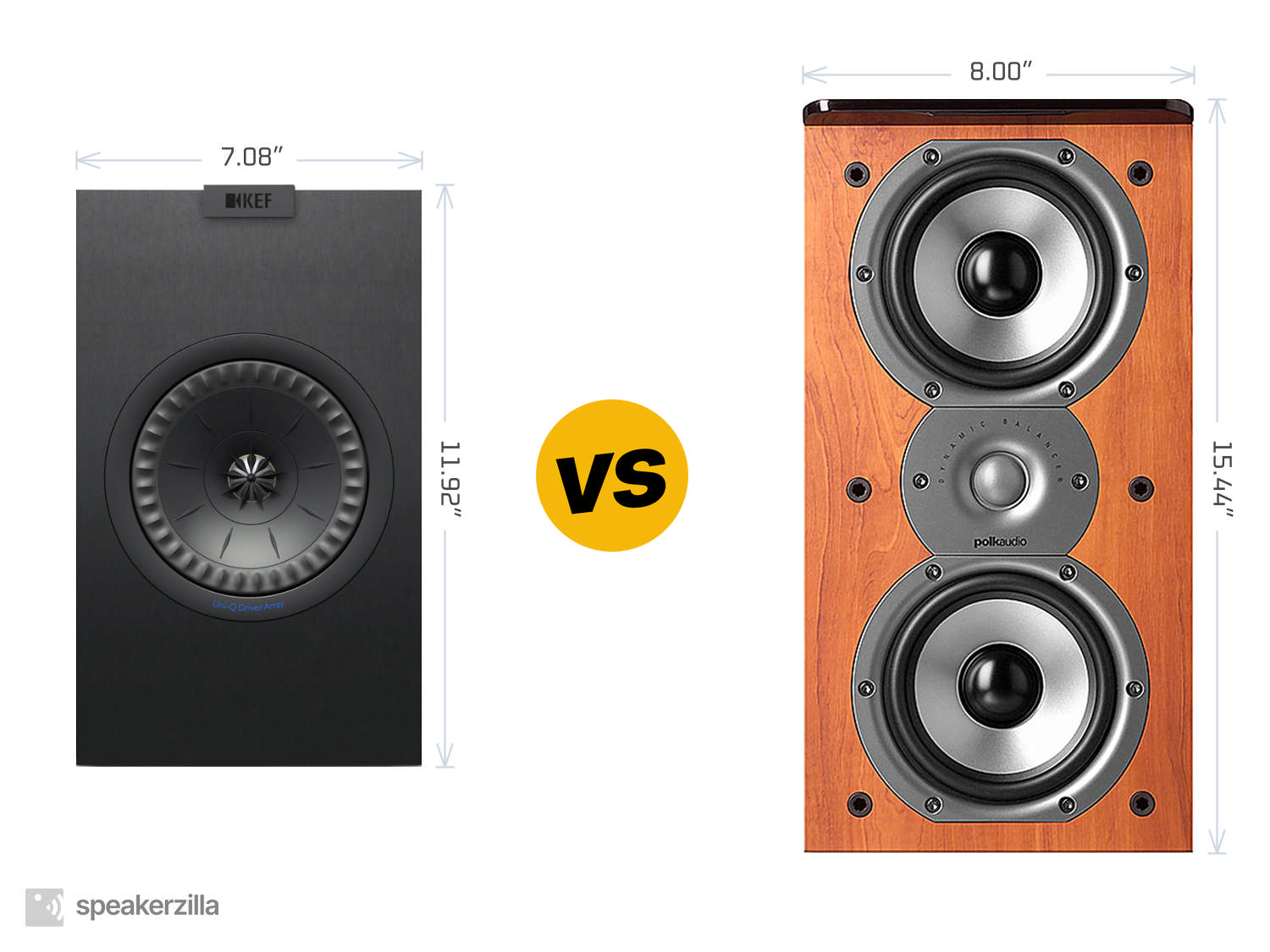
| KEF Q150 Bookshelf Speakers | Polk Audio TSi200 Bookshelf Speakers |
| MSRP | |
| $600 | $300 |
| Dimensions (H × W × D) | |
|
11.92” × 7.08” × 10.94” 303mm × 180mm × 278mm |
15.44” × 8.00” × 11.75” 392mm × 203mm × 298mm |
| Power Type | |
| Passive | Passive |
| Frequency Response | |
| 51-28,000 Hz | 50-24,000 Hz |
| ASR Score | |
| 4.8 | n/a |
| ASR Score w/Subwoofer | |
| 6.9 | n/a |
|
Amazon.com
|
Amazon.com
|
Key Takeaways
TLDR Summary: The KEF Q150 and Polk Audio TSi200 bookshelf speakers cater to different listening palates within the audiophile universe. The Q150's coaxial Uni-Q driver array delivers a precise, three-dimensional soundstage with seamless integration between the tweeter and woofer. These speakers shine in clarity and detail, offering a neutral sound signature ideal for diverse genres. In contrast, the TSi200, with its traditional driver layout, presents a warm and robust sound, emphasizing a richer bass response, which may appeal to listeners favoring rock or electronic music. Ultimately, the choice hinges on personal taste—pristine accuracy from KEF or the full-bodied vigor of Polk.
Speaker Comparison
When it comes to setting up a high-fidelity audio system, the speakers are the final, critical link in the chain. Choosing the right bookshelf speakers can be a daunting task given the multitude of options available. Two models that offer a compelling combination of performance and value are the KEF Q150 and the Polk Audio TSi200. Although they come from manufacturers with distinct design philosophies, both have a lot to offer for the discerning audiophile.
Design and Build Quality
The KEF Q150 boasts a sleek and modern design, with its distinctive Uni-Q driver array that positions the tweeter in the acoustic center of the midrange cone. This layout promises improved dispersion and a more detailed soundstage. The cabinets are elegantly finished and convey a sense of sturdiness, reflecting KEF's commitment to quality. On the other hand, the Polk Audio TSi200 features a more traditional design with separate drivers. Polk's cabinets, while robust, have a conservative aesthetic that may appeal to those looking for a speaker that blends more seamlessly with their interior decor.
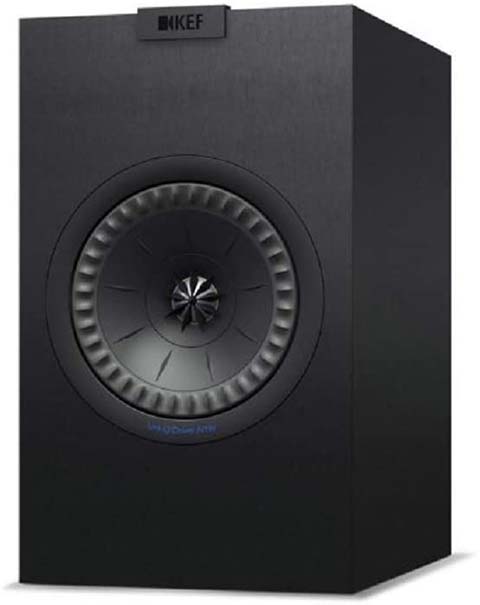
 (at Amazon.com)
(at Amazon.com)Sound Quality
Sound quality is where the KEF Q150 really shines. Its Uni-Q driver array is not just a design choice, it's an acoustic innovation that allows for a remarkably coherent and immersive listening experience. The Q150s are capable of producing a wide soundstage with precise imaging, which is a testament to their advanced driver technology. In contrast, the Polk Audio TSi200, while offering commendable performance, tends toward a warmer and more laid-back presentation. The TSi200s are equipped with Polk's proprietary Dynamic Balance technology, which helps them deliver a smooth and natural sound but they may lack the same level of detail retrieval that the KEFs exhibit.
Frequency Response and Dynamics
The KEF Q150 speakers have a frequency response that is surprisingly deep and taut given their size, and they handle bass with a level of control that belies their bookshelf stature. Midrange frequencies are articulate and vocals are rendered with a palpable presence. The treble region is crisp without veering into harshness, allowing for extended listening sessions. In the Polk Audio camp, the TSi200 also performs admirably. Their sound is characterized by a rich and full-bodied bass response, thanks to their larger drivers, and they manage dynamics with ease, making them suitable for a wide variety of genres. However, audiophiles might note that the bass, while substantial, is not as tightly controlled as with the KEFs.
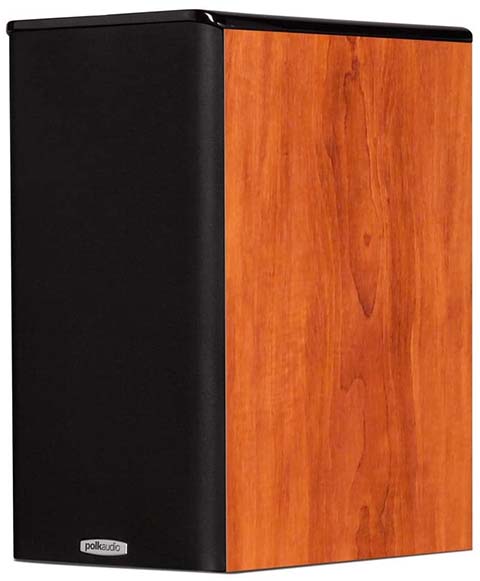
 (at Amazon.com)
(at Amazon.com)Compatibility and Versatility
Compatibility with amplification is another consideration. The KEF Q150s are relatively easy to drive, but they do benefit from quality amplification to unlock their full potential. They're versatile enough to serve in a simple stereo setup or as part of a multi-channel home theater system. Polk Audio's TSi200, with their efficient design, are even more forgiving when it comes to amplifier matching. They can perform well with a range of equipment, from entry-level receivers to more sophisticated hi-fi separates, making them a good choice for those with existing systems looking for an upgrade without the need for additional investments in amplification.
Compare to similar speakers
Ultimately, choosing between the KEF Q150 and the Polk Audio TSi200 will come down to personal preference and listening priorities. The Q150s offer refined, high-resolution sound that will delight audiophiles who crave detail and soundstage accuracy. The TSi200s, meanwhile, offer a warm and engaging listening experience that may be more forgiving and enjoyable for those who prefer a laid-back sound or have less-than-ideal room acoustics. Both sets of speakers represent their brands' commitment to quality and listener satisfaction, making them worthy contenders in the bookshelf speaker market.
In conclusion, whether you lean towards the KEF Q150's articulate and immersive soundstage or the robust, easy-going nature of the Polk Audio TSi200, both sets of bookshelf speakers provide a gateway to high-fidelity audio. They each bear the hallmarks of the sound philosophies of their respective brands and serve as a testament to the fact that great sound can come in relatively small packages. Your ultimate choice will enhance your listening experience for years to come, so consider your space, your system, and most importantly, your ears.
- KEF Q150 reviews and FAQs
- Polk Audio TSi200 reviews and FAQs
Check Current Prices: |
|
|
Amazon.com
|
Amazon.com
|
Affiliate Disclosure: As an Amazon Associate, we earn from qualifying purchases.
